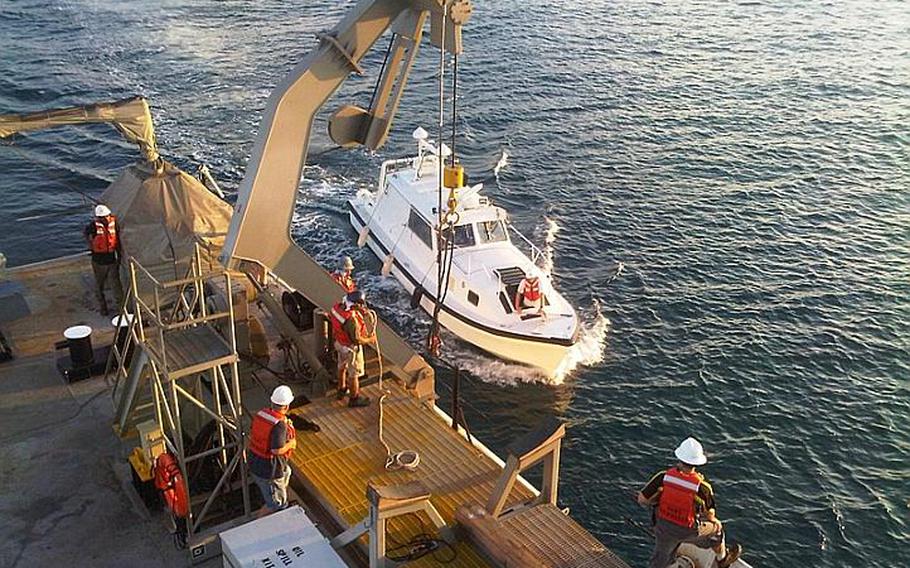
Crewmembers from the USNS Bowditch prepare a hydrographic survey launch during a recent mission off the coast of Vietnam to find underwater crash sites stemming from the Vietnam War. The U.S. Joint POW/MIA Accounting Command will use sonar data from the mission to search for the remains of fallen servicemembers. (Courtesy of Ron Ward)
YOKOSUKA NAVAL BASE, Japan — A U.S. team charged with bringing home the remains of fallen servicemembers found several likely underwater crash sites off the coast of Vietnam in recent weeks, thanks in part to advances in sonar technology.
On Monday, a three-man team from the U.S. Joint POW/MIA Accounting Command, or JPAC, wrapped up a 27-day mission to find Vietnam War casualties in Vietnam’s territorial waters, team leader Ron Ward told Stars and Stripes via telephone from Hanoi on Tuesday.
The team found the potential sites with help from the U.S. Navy Oceanographic Office and the USNS Bowditch, a survey vessel from the Navy’s Military Sealift Command. The Bowditch is equipped with a multi-beam, wide-angle sonar system, which uses sound pulses to map the ocean floor at higher resolution and accuracy than past systems.
The military believes there are about 600 crash sites off the Vietnamese coast stemming from the war, Ward said.
The team, which also worked with the Vietnam's Office for Seeking Missing Persons, found potential crash sites in waters within 12 nautical miles of Quang Tri, Thua Thien-Hue, Quang Nam and Da Nang.
“It was a successful mission in terms of detecting anomalies on the seabed that we think might be associated with [servicemember] losses,” Ward said.
The preliminary data must now be analyzed by a JPAC forensic anthropologist. At promising sites, JPAC teams can use remote exploration vehicles or send divers to see what the sonar array detected.
The Navy first studied the prospect of recovering remains from underwater sites during the war, but ultimately decided against it, Ward said.
“At the time, they concluded they didn’t have the technology,” he said.
The potential crash sites were generally no deeper than about 150 feet, Ward added.
The Bowditch underwater search is only the second of its kind. In 2009, the USNS Bruce C. Heezen conducted a similar operation, according to a statement from the U.S. Embassy in Hanoi.
The U.S. and Vietnam have cooperated on 103 searches for prisoners-of-war and missing-in-action servicemembers since the 1980s, according to the embassy statement.